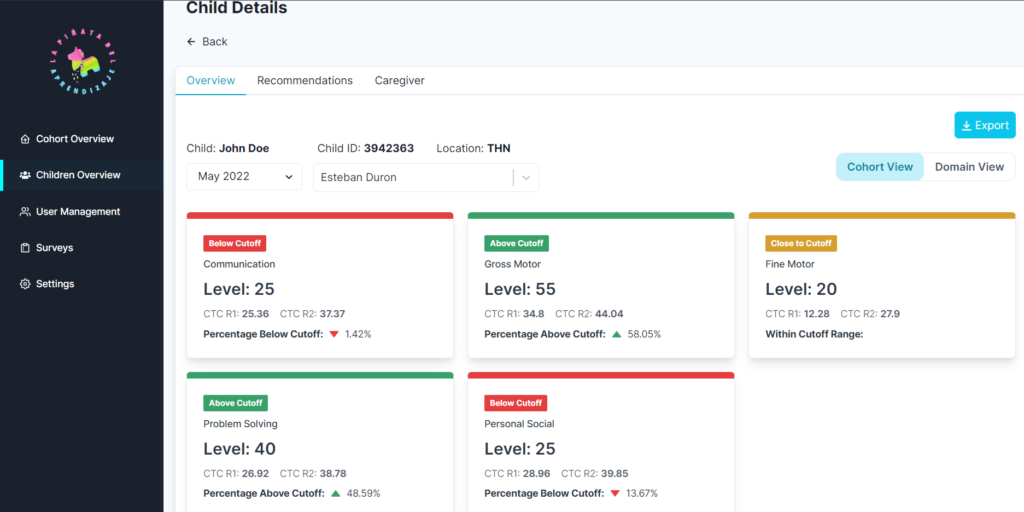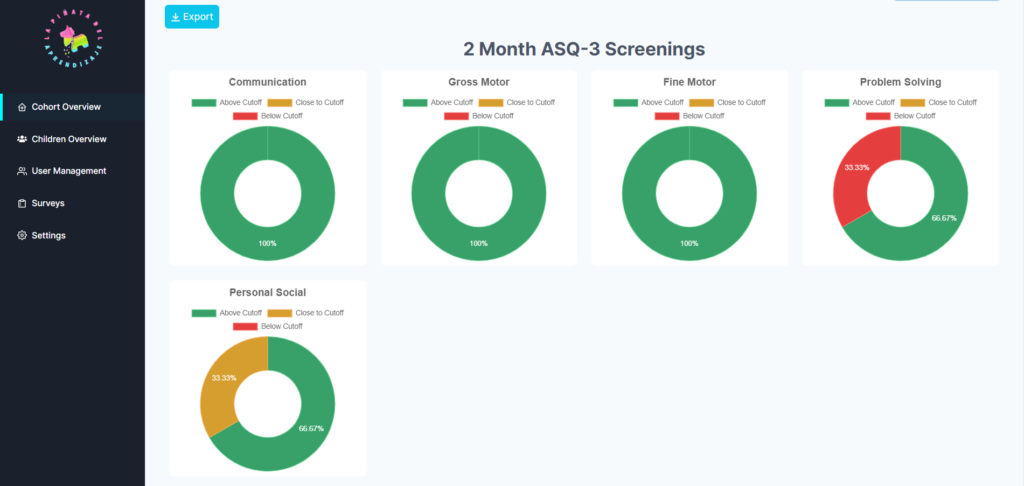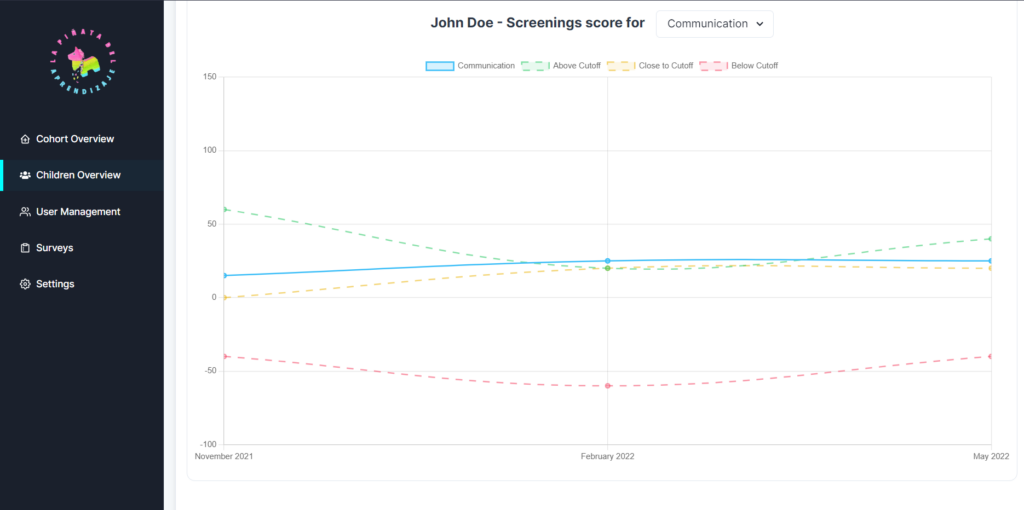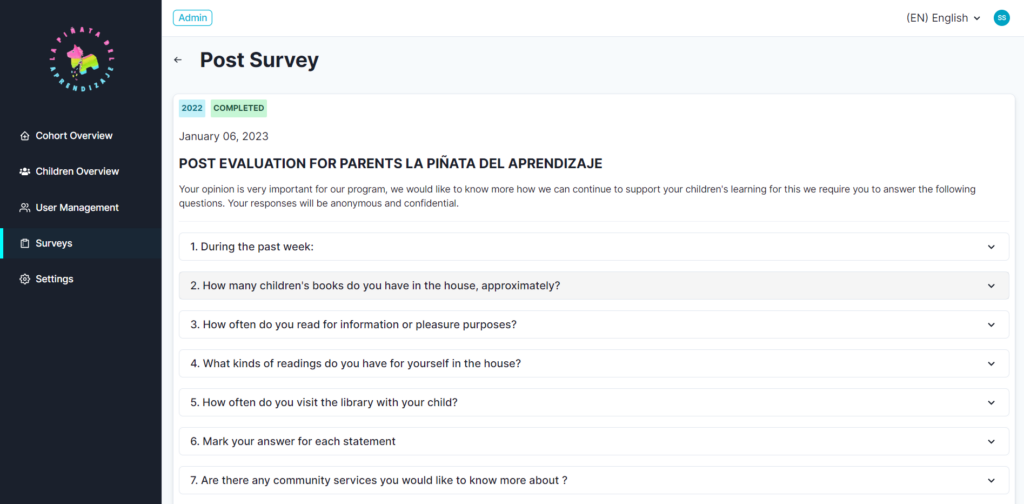La Piñata Del Aprendizaje Web App

Project Overview
Challenge
La Piñata Del Aprendizaje is an early childhood education program that focuses on supporting the comprehensive development of young children from infancy to 5 years old. The program uses the Ages and Stages Questionnaire (ASQ) as one of its main tools to assess the developmental progress of children and track their progress over time. However, because the ASQ is an offline tool, the program is facing challenges like manual reporting and data analysis, which are time-consuming and slow down the program's ability to provide support to the children. Additionally, it makes it difficult to communicate effectively with funders and donors. These challenges limit the effectiveness of the program and limit its ability to reach and serve more children in need.
Outcome
A custom web application featuring reporting, integrated surveys, a content library and classroom management resulting in the following improvements:
- Timely and transparent insights on child, classroom and programme performance.
- Improved speed and accuracy in reporting to donors and funders.
- Increase transparency and accessibility for parents and caregivers.
Project Overview
Client
La Piñata Del Aprendizaje
Timeline
6 Months
Team Size
5 persons
The Client
The Challenge
The Approach
- Design and Discovery: The first phase of the project is design and discovery. During this phase, we worked closely with the client to gather requirements, understand their objectives and goals, and identify the key features and functionalities that will be required for the web platform. We conducted stakeholder interviews, and user research to understand user needs and workflows. From that, we created wireframes and mock-ups of the platform to help the client visualize the final product.
- Planning: Once the design and discovery phase was complete, we consulted and worked with the client to plan and prioritize the development of the web platform. This phase includes creating detailed project plans, identifying the resources needed for the project, and determining the timelines for delivery.
- Development: During this phase our team of developers designed, built, and tested the web platform. We worked in 2 week sprints with regular demos to ensure the client got to consistently provide feedback and review the progress of the product.
- Deployment: During this phase, we worked with the client to deploy the web platform to a production environment, and provided training and support to ensure that the client was able to effectively use and maintain the platform. This includes data migration, configuring hosting, and making sure the platform is stable.
The Solution
A custom web application that is specifically designed to help improve the operations of La Piñata Del Aprendizaje. This application provides a number of key features that help to address the challenges that the program is currently facing.
The key features of this web application are:
- Reporting. Allows the program to quickly and easily track the performance of individual children, classrooms, and groups of children (cohorts) over time. By having real-time access to this data, the program is able to identify areas where children are struggling and provide targeted support to help them catch up. This helps to ensure that the children in the program are making progress and reaching their developmental milestones.
- Integrated Surveys. Allows the program to more easily gather feedback from parents and teachers about the children’s performance. In turn, this will help increase the accuracy and timeliness of the data that the program is collecting and will help to ensure that the program is providing the best possible support to the children in its care.
- Content Library. Allows the program to easily access a wide variety of educational material that can be used to help children learn and grow by ensuring that the children in the program are exposed to a wide variety of educational experiences that are tailored to their specific needs and abilities.
- Classroom Management Tools. Allows the program to more effectively manage the day-to-day operations of the classrooms. By having access to real-time data and being able to easily manage the schedule and curriculum of the classrooms, the program will be able to provide a more engaging and effective learning experience for the children in its care.
Conclusion
Overall, these improvements will lead to a more effective and efficient early childhood education program, by providing timely and transparent insights, accurate and fast reporting, easy access and communications with parents; all enabling the program to provide better support to the children in their care, and to expand and help more children in need.







